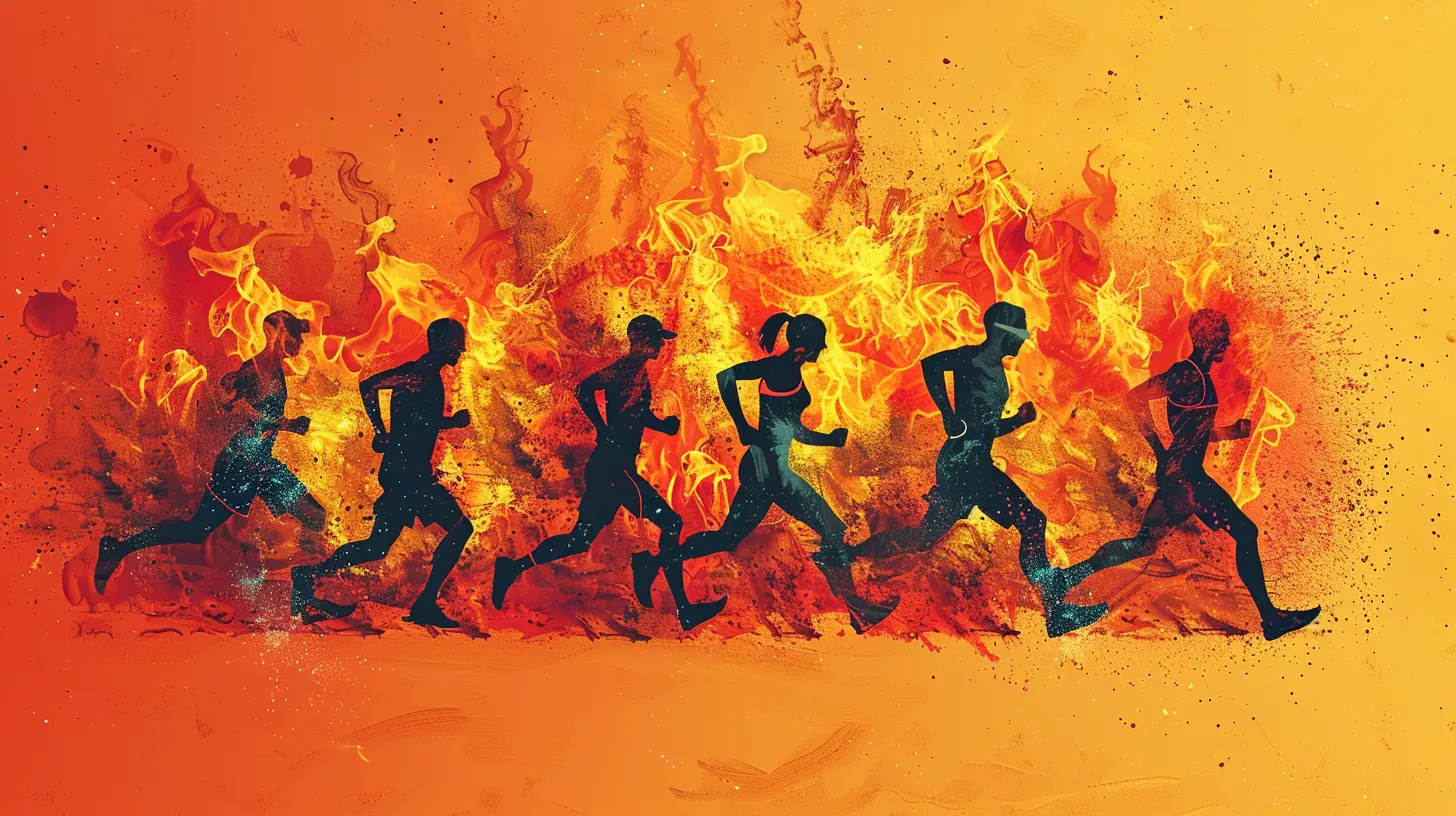How to Pace Yourself for a Marathon: Avoiding Burnout
26 July 2025
Running a marathon isn't just about crossing the finish line—it's about getting there without completely exhausting yourself. Pacing plays a massive role in ensuring you don't burn out before reaching the home stretch. Think of it like budgeting your paycheck; if you spend too much early on, you're left struggling toward the end.
Whether you're training for your first marathon or looking to improve your race strategy, pacing is key. Let’s break it down step by step so you can conquer that 26.2 miles without hitting the dreaded wall. 
Why Pacing Matters in a Marathon
Imagine sprinting full speed at the start of a marathon—sounds like a disaster, right? Running too fast too soon leads to burnout, muscle fatigue, and sometimes even injury. Proper pacing helps you:- Maintain energy levels throughout the race
- Prevent hitting “the wall” (that dreaded moment when your body feels like it’s shutting down)
- Finish strong rather than barely crawling across the line
- Enjoy the experience instead of suffering through the last few miles
Pacing is a mental and physical game. Get it right, and you'll not only finish but feel great doing it. 
Understanding Your Ideal Marathon Pace
Before we jump into pacing strategies, let’s talk about figuring out your optimal marathon pace. Your marathon pace should be a speed you can comfortably maintain for the entire 26.2 miles.How to Determine Your Pace
1. Use Your Recent Race Times – If you've run a half-marathon or a 10K, use an online pace calculator to estimate your marathon pace.2. The Long-Run Test – During training, do a long run at your expected marathon pace. If you finish feeling strong, it’s a good sign that the pace is sustainable.
3. Talk Test – At marathon pace, you should be able to hold a conversation in short sentences but not sing your favorite song without gasping for air.
Everyone has a different "sweet spot" when it comes to pacing. The key is to be realistic about what your body can handle for 26.2 miles. 
Pacing Strategies to Avoid Burnout
1. Start Slow, Finish Strong
One of the biggest mistakes runners make is going out too fast. The adrenaline of race day can make those first miles feel effortless, but pushing too hard early will cost you later.- The Negative Split Approach: This means running the first half slightly slower than the second half. Gradually increasing your pace allows you to finish strong rather than dragging yourself to the finish line.
- Hold Back in the First 3-5 Miles: It should feel almost too easy in the beginning—trust the process!
2. The Even Pace Strategy
Another effective method is maintaining a steady, consistent pace from start to finish.- Use a GPS watch or pacing group to keep on track.
- Know your goal pace per mile and ensure you're sticking close to it.
- Avoid surges—speeding up and slowing down wastes energy.
Consistency keeps your body in a rhythm, preventing burnout.
3. Break the Race into Segments
Instead of thinking about running 26.2 miles, break the marathon into smaller, more manageable chunks.- First 10 Miles: Stay relaxed, keep it controlled.
- Miles 11-20: Increase focus, stay steady.
- Last 6.2 Miles: If you’ve paced well, you’ll have enough left in the tank to push through.
This mental trick makes the race feel less overwhelming and helps you stay in control. 
Training Tips to Improve Pacing
1. Long Runs at Race Pace
Your long training runs are the perfect time to practice marathon pacing. Aim to run at your planned marathon pace for at least part of your long runs so your body adapts to the effort.2. Tempo Runs for Endurance
Tempo runs help build stamina so you can maintain a steady pace without burning out. Running at a challenging but controlled pace for 20-40 minutes in training mimics marathon effort.3. Interval Training for Speed Control
Speed workouts aren't just for sprinters. Shorter bursts of fast running followed by recovery help train your body to handle pace changes without wearing yourself out.4. Run Negative Split Workouts
Practice running the second half of your long or tempo runs faster than the first half. This builds confidence for race day and trains your body to finish strong.Race Day Pacing Tips
1. Don't Let Adrenaline Ruin Your Race
The excitement of race day can make you feel invincible in the first few miles. Stick to your plan! If it feels too slow, you're doing it right.2. Use a Pacing Group
Many marathons have pace groups led by experienced runners. If you’re worried about staying on track, find a group running your target pace and stick with them.3. Stay Smart with Hydration and Fuel
Even if your pacing is perfect, failing to hydrate and fuel properly can derail your race.- Drink water and sports drinks regularly—dehydration leads to fatigue.
- Eat small amounts of carbs every 30-45 minutes to avoid energy crashes.
4. Listen to Your Body
Pacing plans are great, but sometimes things don’t go as expected. If you’re struggling, adjust accordingly rather than pushing yourself into burnout.What to Do If You Hit "The Wall"
Despite your best efforts, sometimes the wall happens. Suddenly, your legs feel like lead, and every step is a battle.- Slow down, but keep moving—walking for a minute or two can help.
- Take in fuel and fluids—your body might be low on glycogen.
- Engage your mind—remind yourself why you signed up in the first place!
The key is staying mentally strong and pushing through.
Final Thoughts
Marathon pacing isn’t about speed—it’s about strategy. Running smart is just as important as running strong. By pacing yourself correctly, you’ll make the most of your training, avoid burnout, and cross the finish line feeling accomplished.So, the next time you toe the starting line, remember: patience wins the race. Stick to your plan, trust your training, and enjoy every step of the journey!
all images in this post were generated using AI tools
Category:
MarathonAuthor:

Nelson Bryant
Discussion
rate this article
1 comments
Zora Graham
Pacing in a marathon is an art that balances endurance and speed. Start with a conservative pace to conserve energy and listen to your body’s signals. Incorporating strategic rest and nutrition not only prevents burnout but also enhances performance, allowing you to finish strong and enjoy the journey.
August 11, 2025 at 4:54 AM

Nelson Bryant
Thank you for your insightful comment! Balancing endurance and speed is indeed crucial for marathon success, and your emphasis on listening to one’s body and incorporating rest and nutrition is spot on.


